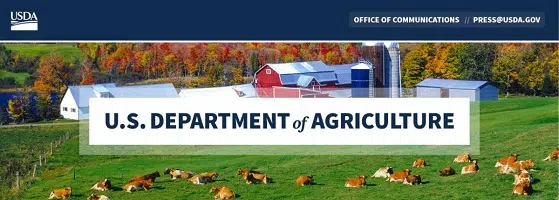The U.S. Department of Agriculture’s National Agricultural Statistics Service (NASS), in partnership with the Natural Resources Conservation Service (NRCS), is reaching out to farmers, ranchers, and agricultural landowners to gather indepth information about the conservation practices they use. Nearly 12,000 operators nationwide will receive the 2024 Conservation Effects Assessment Project survey. Data obtained will support the third set of national and regional cropland assessments delivered by USDA’s Conservation Effects Assessment Project (CEAP), a multi-agency effort led by NRCS to quantify the effects of conservation practices across the nation’s working lands.
“The survey gives farmers the power to provide a more complete and accurate picture of the conservation practices on their lands and in their operations,” said Joe Parsons, NASS Administrator. “I urge farmers to participate if contacted, because their responses can help leaders focus on the conservation practices that most benefit both the farmer and the natural resources on which we all rely.”
CEAP Cropland Assessments quantify the environmental outcomes associated with implementation and installation of conservation practices on agricultural lands. Findings are used to guide conservation program development and support conservationists, agricultural producers, and partners in making informed management decisions backed by data and science.
Specifically, CEAP results may help:
- Evaluate the resources farmers may need in the future to further protect soil, water, and habitat.
- Shed light on techniques farmers use to conserve healthy environments.
- Improve and strengthen technical and financial programs that help landowners plan and install conservation practices on agricultural land.
- Support the conservation programs that can help producers’ profits while also protecting natural resources.
This CEAP survey is conducted through a cooperative agreement between NRCS and NASS. NRCS will couple survey results with modeling to report on trends in cropland conservation – and associated outcomes – from 2024 through 2026.
“The U.S. has more than 300 million acres of cultivated cropland that are used by farmers and other land managers to grow diverse crops for food, fuel, and livestock feed for our nation and beyond,” said NRCS Chief Terry Cosby. “CEAP delivers critically important data that we use to guide our strategic, equitable, and voluntary conservation on cropland acres nationwide. This leads to healthier ecosystems, improved conservation, and stronger management of agricultural landscapes.”
Local NASS representatives will visit farmers and agricultural landowners in August and September of 2024 to determine if their operations and properties meet the criteria to be considered eligible candidates for the survey. Eligible farmers and landowners may be contacted between November 2024 and March 2025 and asked to participate in the survey. Typical questions will discuss farm production practices; chemical, fertilizer, and manure applications; tillage; irrigation use; and installed conservation practices. NASS will provide survey data to NRCS, the agency tasked with publishing findings.
Information provided to NASS and analyzed by NRCS is kept confidential, as required by federal law. The agencies only publish data in aggregate form, ensuring that no individual respondent or operation can be identified.
The data from this survey will be published as a report on the CEAP Cropland Assessments webpage at nrcs.usda.gov/ceap/croplands. If you have questions about the survey, please contact us at (888) 424-7828 or visit nass.usda.gov/go/ceap.

